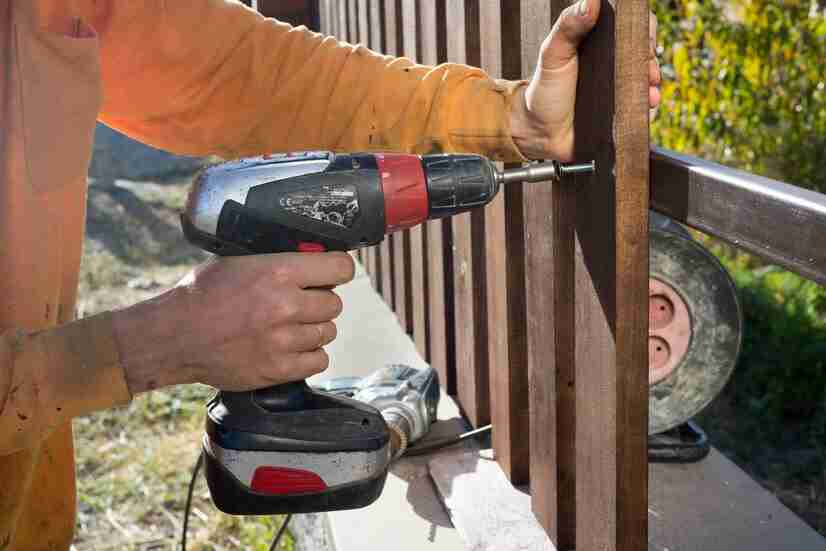Common Mistakes in Wood Fence Installation Manteca to Avoid

Installing a wood fence in Manteca can transform your property, adding both beauty and privacy. However, the process isn’t as straightforward as it might seem. Many homeowners fall into common pitfalls that can compromise the durability and effectiveness of their fence.
From improper measurements to choosing the wrong materials, these mistakes can lead to costly repairs and a less-than-perfect outcome. Understanding and avoiding these errors is crucial for achieving a successful wood fence installation Manteca. Let’s dive into the key issues you should watch out for to ensure a flawless fence installation.
Measuring Mistakes to Avoid for Wood Fences
One of the most crucial aspects of a successful wood fence installation is accurate measurement. Missteps at this stage can result in a range of issues, from uneven panels to posts placed too closely together, compromising the fence’s stability and appearance. Start by meticulously measuring the length of the area where the fence will go, taking into account any landscape irregularities or obstacles like trees and shrubs. Utilizing tools such as a string line and level ensures that your measurements are straight and true.
Double-checking these measurements before proceeding with cutting or purchasing materials is essential to avoid costly errors. Additionally, plan for the placement of gates and other openings to ensure they align seamlessly with your measurements. Small inaccuracies at this initial stage can lead to larger, more costly problems later, so it’s worth investing the time to get it right from the start.
Choosing the Right Wood for Longevity
Selecting the appropriate wood for your fence is crucial for ensuring its durability and longevity. Different types of wood offer varying levels of resistance to weather, insects, and decay. Cedar and redwood are popular choices due to their natural resistance to rot and pests, making them ideal for enduring Manteca’s climate. These woods are also valued for their attractive appearance and ability to age gracefully, adding a timeless appeal to your fence. Another excellent option is pressure-treated wood, which is infused with preservatives to resist moisture and insects.
However, not all pressure-treated wood is equal; choose high-quality, treated wood that will stand up to the specific weather conditions in your area. Additionally, consider how the wood’s color and grain will complement your home’s style. By investing in the right type of wood, you ensure your fence remains strong and visually appealing, ultimately reducing the need for costly repairs and replacements over time.
Common Errors in Fence Post Placement
Fence posts are essential for the stability and longevity of any wood fence. Correctly placing these posts is crucial for a durable and sturdy structure. One frequent mistake is spacing the posts too closely together, which can lead to sagging and instability over time. Ideally, posts should be spaced between 6 to 8 feet apart, depending on the size of your panels, but this can vary with different fence designs and heights.
Another critical error is not setting the posts deep enough into the ground. To ensure stability, posts should be buried at least one-third of their total length. This depth helps the posts withstand the forces of wind and ground movement. Additionally, securing the posts with concrete and allowing adequate curing time before attaching the panels is essential. This process ensures that the posts remain firmly in place and reduces the risk of structural issues down the line.
Importance of Properly Spacing Fence Panels
Proper spacing between fence panels is crucial for both the fence’s visual appeal and its effectiveness. Panels that are spaced too closely can look overly dense and block the view, while those set too far apart can lead to gaps that reduce privacy and security. The spacing should align with your design plan and be adjusted based on the type of wood and the style of the fence.
Adequate spacing also accommodates the natural expansion and contraction of the wood due to changes in weather, helping to prevent issues like warping and buckling. Consistent spacing not only improves the fence’s functionality but also enhances its aesthetic by providing a neat and uniform appearance. This attention to detail ensures your fence looks professional and well-crafted, contributing to its overall durability and visual impact.
Avoiding Poor Drainage Around Fence Posts
Good drainage is essential for the longevity of your wood fence, especially around the posts. Without proper drainage, water can pool at the base of the posts, leading to wood rot and compromising the structural integrity of your fence over time. To prevent these issues, start by ensuring that the posts are set in well-draining soil. Incorporating gravel at the bottom of each post hole helps to facilitate proper water flow and reduce the risk of water pooling.
Additionally, grading the area around the fence is crucial to direct water away from the posts and prevent it from accumulating. Installing a drainage system or adjusting the landscape can further enhance the effectiveness of your drainage efforts. These measures not only help in maintaining the stability of your fence but also significantly extend its lifespan, ensuring that it remains in top condition for years to come.
Incorrectly Securing Fencing Materials
How you secure your fencing materials plays a crucial role in determining the strength and durability of your fence. Using inadequate fasteners or failing to secure panels tightly enough can result in wobbling, sagging, or even complete panel failure. It’s essential to choose high-quality screws or nails specifically designed for outdoor use to withstand the elements and maintain the integrity of your fence. Following the manufacturer’s installation guidelines is also important to ensure that all components are correctly fastened and aligned.
Regular maintenance and inspections are key to spotting any loose or damaged fasteners early. By addressing these issues promptly, you can prevent more severe problems and extend the lifespan of your fence, keeping it sturdy and visually appealing for years to come.
Failing to Treat Wood for Weather Resistance
Wood fences face a variety of weather conditions that can accelerate deterioration if they aren’t properly treated. Without a weather-resistant sealant or stain, wood is vulnerable to rot, warping, and discoloration from moisture and UV rays. Applying a high-quality sealant or stain creates a protective barrier that safeguards the wood against these elements, preventing damage and maintaining the fence’s appearance. UV rays can cause the wood to fade and crack, while moisture can lead to swelling and rot.
Regular reapplication of these treatments is essential to ensure ongoing protection and to preserve the wood’s integrity. Investing in proper weather protection not only enhances the durability of your fence but also keeps it looking vibrant and attractive for many years, reducing the need for costly repairs and replacements.
Skipping the Fence Installation Permits
Before starting your fence installation, it’s important to check local regulations and obtain any necessary permits. Skipping this step can lead to legal issues, fines, or even having to remove the fence if it doesn’t comply with local codes. Permits often ensure that your fence meets safety standards and zoning requirements, helping to avoid disputes with neighbors and local authorities.
Contact your local planning or zoning department to find out what permits are required and ensure all necessary paperwork is completed before beginning your project. Proper permitting can save you from future complications and ensure a smoother installation process.
Overlooking Soil Preparation Before Installation
Soil preparation is a critical step in ensuring a stable and durable fence. Failing to prepare the soil properly can lead to issues such as uneven posts, poor drainage, and overall instability. Before installing your fence, assess the soil condition and make any necessary adjustments, such as removing rocks, debris, or existing vegetation.
If the soil is too loose or sandy, consider adding a stabilizing material like gravel or compacting the soil to provide a solid base for your posts. Proper soil preparation helps to create a level and supportive foundation, which is essential for a successful wood fence installation.
Misjudging the Height and Depth Requirements
Getting the height and depth of your fence right is crucial for both functionality and aesthetics. Misjudging these measurements can lead to a fence that is either too short for privacy or too tall and imposing. Additionally, the depth of the fence posts is important for stability. Posts should generally be buried at least one-third of their total length to ensure they can withstand environmental pressures and ground movement. Incorrect height and depth can compromise the effectiveness of your fence and lead to costly adjustments later on. Double-checking these measurements and planning accordingly can help you achieve the desired look and performance for your fence.
Avoiding common mistakes in wood fence installation can make a huge difference in the durability and appearance of your fence. From accurate measurements to choosing the right materials and ensuring proper post placement, each step is crucial for a successful installation. By paying attention to these details, you can enjoy a beautiful and long-lasting fence that enhances your property.
Ready to get started on your perfect wood fence? Contact High Quality Fence for expert advice and professional installation. Visit us at 1112 N. Main Street #171, Manteca, CA 95336, or call 209-815-9015. For more information, email us at info@highqualityfence.com. Let’s build your ideal fence together!
 Se Habla Español
Se Habla Español


